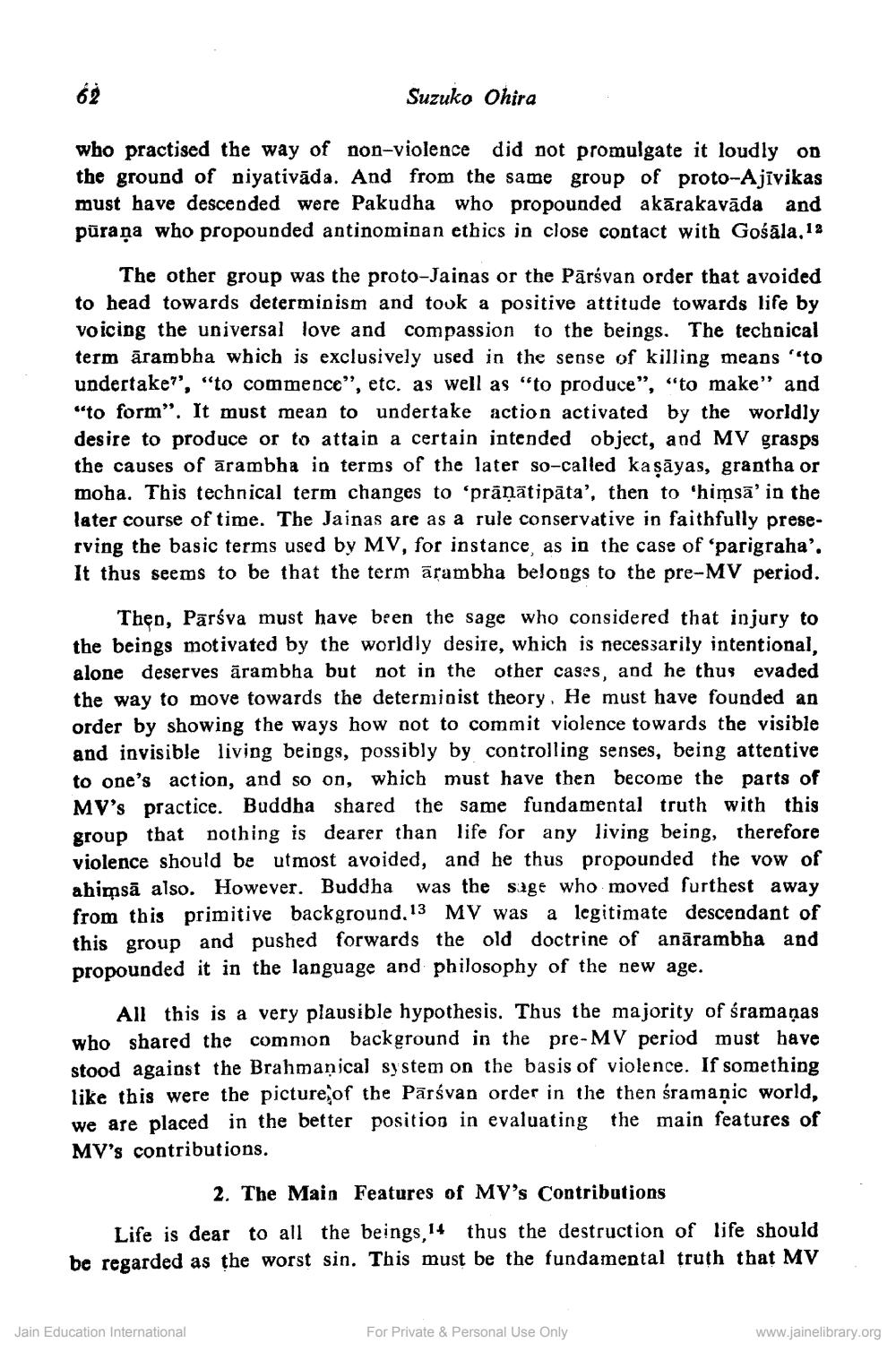________________
62
Suzuko Ohira
who practised the way of non-violence did not promulgate it loudly on the ground of niyativāda. And from the same group of proto-Ajīvikas must have descended were Pakudha who propounded akārakavāda and pürana who propounded antinominan ethics in close contact with Gośāla, 12
The other group was the proto-Jainas or the Pārsvan order that avoided to head towards determinism and took a positive attitude towards life by voicing the universal love and compassion to the beings. The technical term ārambha which is exclusively used in the sense of killing means ''to undertake?', "to commence", etc. as well as "to produce", "to make" and "to form". It must mean to undertake action activated by the worldly desire to produce or to attain a certain intended object, and MV grasps the causes of ārambha in terms of the later so-called ka sāyas, grantha or moha. This technical term changes to 'prāņātipāta', then to 'hiņsā' in the later course of time. The Jainas are as a rule conservative in faithfully preserving the basic terms used by MV, for instance, as in the case of 'parigraha'. It thus seems to be that the term ārambha belongs to the pre-MV period.
Then, Pārsva must have been the sage who considered that injury to the beings motivated by the worldly desire, which is necessarily intentional, alone deserves ārambha but not in the other cases, and he thus evaded the way to move towards the determinist theory. He must have founded an order by showing the ways how not to commit violence towards the visible and invisible living beings, possibly by controlling senses, being attentive to one's action, and so on, which must have then become the parts of MV's practice. Buddha shared the same fundamental truth with this group that nothing is dearer than life for any living being, therefore violence should be utmost avoided, and he thus propounded the vow of ahimsā also. However. Buddha was the sige who moved furthest away from this primitive background.13 MV was a legitimate descendant of this group and pushed forwards the old doctrine of anārambha and propounded it in the language and philosophy of the new age.
All this is a very plausible hypothesis. Thus the majority of śramaņas who shared the common background in the pre-MV period must hav
against the Brahmanical system on the basis of violence. If something like this were the picture of the Pārsvan order in the then śramanic world, we are placed in the better position in evaluating the main features of MY's contributions.
2. The Main Features of MV's Contributions
Life is dear to all the beings, 14 thus the destruction of life should be regarded as the worst sin. This must be the fundamental truth that MV
Jain Education International
For Private & Personal Use Only
www.jainelibrary.org




